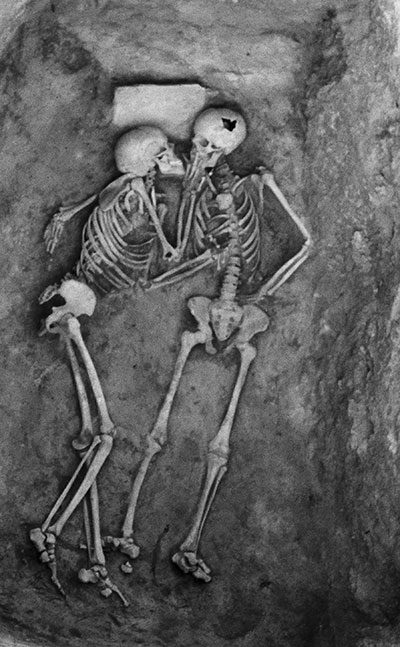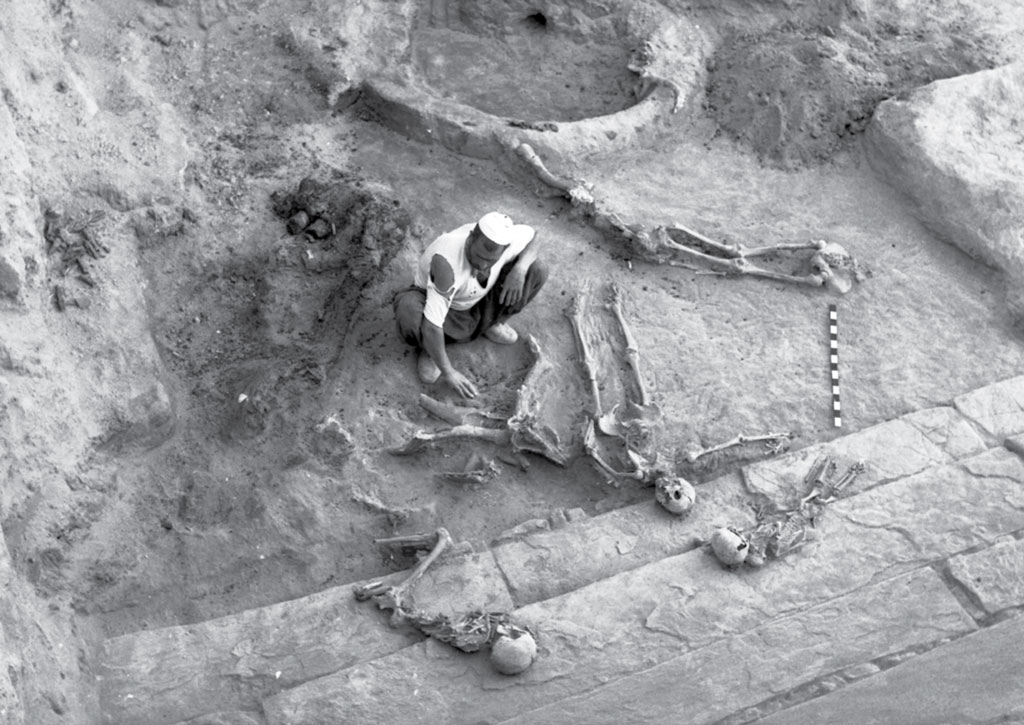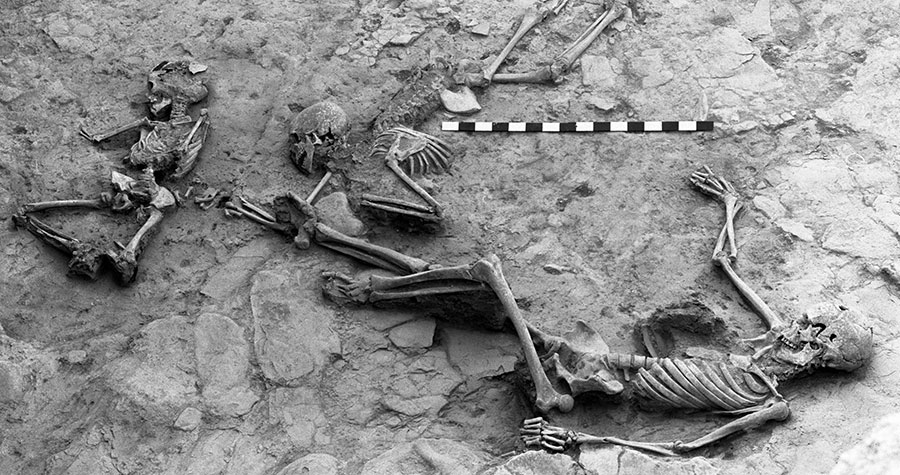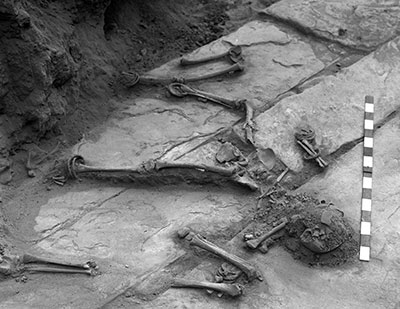Archaeology is compelling, in part, because it provides a connection to people of times past. It allows us to step out of ourselves and, for a moment, envision what life was like in a different time and place. There are, however, many basic human needs, such as food, shelter, and interpersonal relationships, that span time and space. No amount of technology or modern convenience can separate us from basic biology. When something from the past is evocative on this visceral level, it makes an even more profound impact. One such discovery is a pair of skeletons called “the lovers,” from Hasanlu, Iran.

Around 800 BCE, the settlement of Hasanlu in northwestern Iran was destroyed by an as yet unknown invading force. Inhabitants were slain and left where they fell, and much of the site was burned in a conflagration. The skeletons of the “lovers” were found together in a mudbrick and plaster bin during excavations in 1973. They perished during the destruction of the site; both have some evidence of trauma from around the time of their death, but no definitively fatal wounds (many injuries such as those to soft tissue could leave the skeleton unmarked). They are facing one another and appear to be in an embrace. The skeleton on the left is reaching out a hand to touch the face of the other individual, and their arms are around one another. The “lovers” were on display at the Penn Museum from the mid-1970s until the mid-1980s.
Interpretation of these skeletons is inherently biased because of the nickname given to them. It forces us to unwittingly make assumptions about these individuals and the nature of their relationship. Here are the basic biological outlines of the two individuals based on skeletal analysis:
HAS 73-5-799 (Sk 335)
- On back facing Sk 336.
- Mostly complete skeleton of a young adult or older subadult, 19-22 years old, third molars/wisdom teeth recently erupted.
- Pelvis clearly male in features. Cranium less definitive, but this may be attributable to the young age of this individual.
- Health was good with no dental disease or old healed injuries.


HAS 73-5-800 (Sk 336)
- On left side facing Sk 335. Right hand is touching the face of Sk 335.
- Mostly complete skeleton of an older young adult 30–35 years old. Some signs on the skeleton of ageor activity-related changes such as osteoarthritis in the spine.
- Physical characteristics for sex estimation are less clear on this individual, but overall suggest a male. In this case, the cranium is distinctly male while the pelvis is more mixed in its morphology.
- Length of bones is similar to Sk 335, but overall this skeleton is less robust.
These skeletons represent one very young adult male and one slightly older probable male, both fairly healthy and in the prime of life.
The “lovers” are perplexing in a variety of ways. First of all, how did they come to be in the bin at all? Were they placed there, or did they attempt to hide from their attackers inside it? Secondly, there were no artifacts found in the bin with these individuals except for a stone slab that is under their heads. This is in contrast with other skeletons at the site, which are shown clearly with adornments still on their bodies. Why did they have nothing with them? Had they been stripped of their possessions? Finally, what was the nature of the relationship between these two people? Was their tender pose a spontaneous gesture of comfort in the face of dire circumstances?

Analysis of the remains may be able to shed light on certain aspects of their story. For example, DNA analysis can confirm their biological sex and possibly even discern if there is a familial relationship between the two. However, the assumption that their apparent tender and close relationship necessitates a romantic connection is not the only possible interpretation. Human experience is full of difficult times and the need for comfort from others. As these two individuals and the other inhabitants of Hasanlu faced their darkest hour together, an embrace from a friend, lover, relative, or even a stranger might have been a natural outcome of extreme duress. The facts of the discovery of these two skeletons are compelling, but we must remember that any tales we weave about them say more about our enculturated perspectives than anything else. Archaeological interpretation is multifaceted and we are destined to be left with speculation and mystery due to the very nature of the process.
